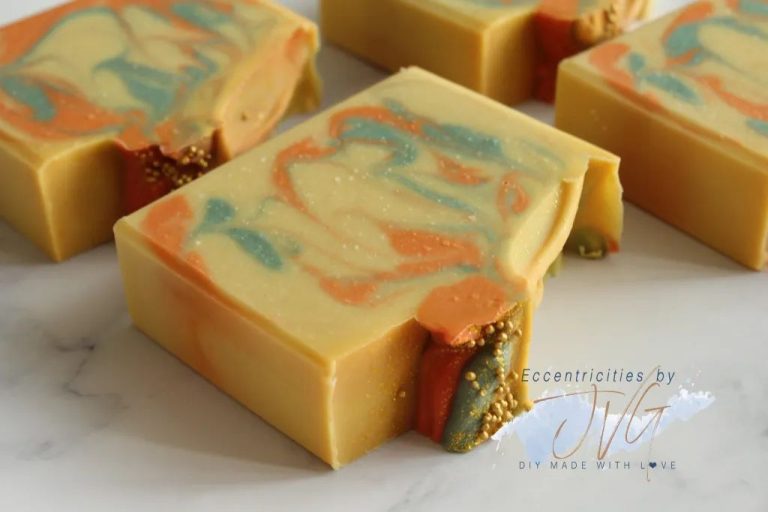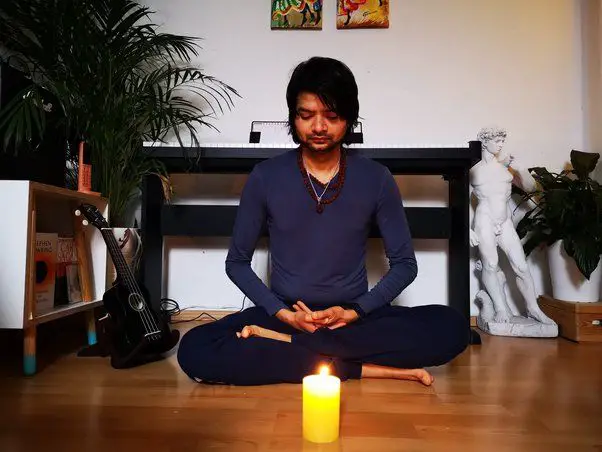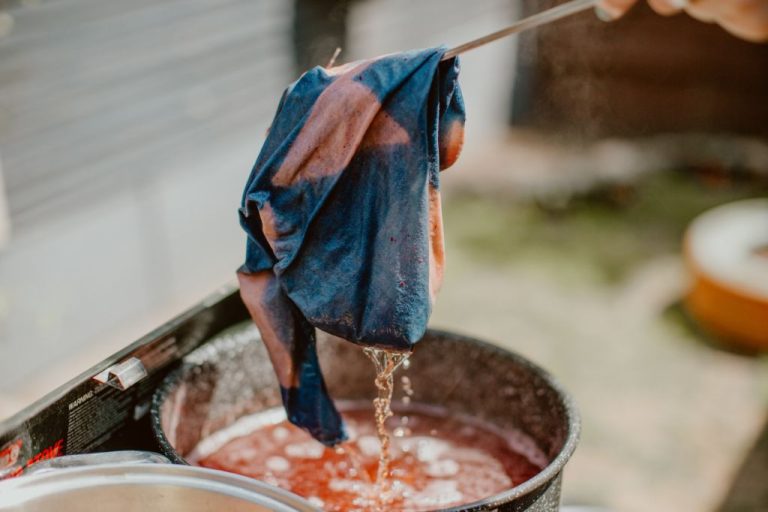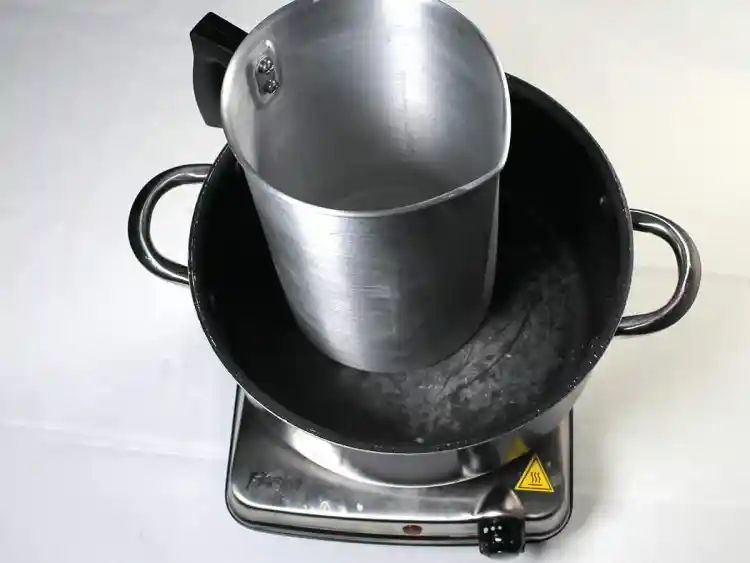How Do You Dye Clothes Green?
Dyeing clothes green is a creative way to update your wardrobe and add unique style to your outfits. Green is associated with nature, growth, and renewal, and it comes in a variety of shades that can complement different skin tones and styles. When done properly, dyeing fabric green is an inexpensive way to transform the color of clothing and accessories with beautiful results.
This guide will provide an overview of the entire process of dyeing fabric green, from choosing the right dye and preparing your workspace to techniques for dyeing and caring for the finished product. We’ll also provide tips for achieving an even, quality color and maintaining the vibrancy of the fabric over time. With the right approach and by following some basic guidelines, you can safely dye natural fabrics like cotton, linen, silk, and wool a rich, vibrant shade of green at home.
Reasons to Dye Clothes Green
There are several reasons why people choose to dye their clothes green.
One motivation is environmental consciousness. As people become more aware of the impacts of fast fashion, some are turning to dyeing as an eco-friendly way to refresh their wardrobe. Dyeing allows you to revive faded or outdated clothes instead of tossing them out.
Another common reason is for St. Patrick’s Day celebrations. Many people enjoy wearing green clothing to get into the Irish spirit on March 17th. Dyeing an outfit is a fun DIY approach instead of buying something new.
Green can also make a bold fashion statement. Vivid emerald, mossy olive, or pastel mint green garments stand out. Dyeing your own unique green hue allows you to achieve a one-of-a-kind look.
Overall, dyeing clothes green allows you to be creative, thrifty, and environmentally-friendly with your wardrobe. It’s a simple way to get a new look for an upcoming holiday or make your style pop.
Supplies Needed
Dyeing fabric green at home requires just a few basic supplies that you likely already have or can easily find. Here is an overview of the key supplies you’ll need:
- Green Dye – There are many types of fabric dyes in various shades of green. Choose a dye suitable for your fabric type, such as all-purpose dye, or one specifically for cotton, silk, etc. Liquid dyes typically offer the most vivid colors.
- Pots – You’ll need at least one pot, but ideally two – one for mixing up the dye bath and one for dunking the fabric. Enamel, stainless steel or aluminum pots work best.
- Stove – You’ll need a stove or cooktop to heat the dye bath water. Electric or gas stoves both work well.
- Measuring tools – Measuring cups and spoons will help you accurately mix up the dye according to package directions.
- Gloves – Wear rubber gloves to protect your hands from dye stains.
Having these basic supplies for dyeing fabric green will make the process easy and successful.
Choosing a Dye
When selecting a dye for green clothing, you have several options depending on the specific shade and intensity you want to achieve. Here are some of the most common types of green fabric dye:
Liquid dyes: These come ready-to-use in small bottles and provide intense, vivid greens. They work well for silk, wool, nylon, and other materials. Some common liquid dyes for green are acid dyes, disperse dyes, and fiber reactive dyes. Each has different chemical properties ideal for certain fabrics.
Powdered dyes: You’ll need to dissolve powdered dyes in water before applying them. They allow you to easily control the shade by adjusting the dye concentration. Common green powdered dyes are procion dyes and acid dyes. These work well on plant-based fabrics like cotton and linen.
Natural dyes: Derived from plants, these create soft, earthy green tones. You’ll need a mordant to help bind natural dyes to the fibers. Good options for green are nettles, artichokes, and spinach. Natural dyes give a beautiful handmade look.
Consider the starting color of your fabric, as this impacts the end result. For pale shades, choose a weaker dilute dye. For deep jewel tones, use a saturated dye solution. Test samples first before dyeing a whole garment. This helps ensure you get the perfect green hue.
Preparing the Dye
When dyeing fabric green, it’s important to properly prepare the dye according to the instructions. This usually involves mixing the green dye powder with warm or hot water. Be sure to use a non-metal container, as metal can react with some dyes.
Start by filling your container about halfway with warm water. Then add the amount of dye powder specified in the instructions, usually a certain weight to volume ratio. Mix the powder thoroughly until fully dissolved. Avoid creating clumps which may lead to uneven dyeing.
If the instructions call for additional ingredients like salt or soda ash, mix those in as well. These help the dye bond properly with the fabric. Once fully mixed, the dye is ready to use for dyeing your green fabrics. Just be sure to stir occasionally to prevent settling. Properly preparing the dye is a key step for achieving an even, vibrant green color.
Preparing the Fabric
Properly preparing the fabric is an essential first step to ensure successful dyeing. The preparation process involves washing and drying the material to remove any impurities prior to dyeing. According to How-to: Plant-Based Fabric Dyeing at Home, adequate washing removes dirt, oils, or sizing that could interfere with dye absorption.
Begin by washing the fabric in hot water with a mild detergent or soap. Avoid using fabric softeners or dryer sheets as they leave a coating that resists dye absorption. Rinse the fabric thoroughly until the water runs clear. Allow the wet fabric to fully air dry before dyeing, as any remaining moisture will dilute the dye bath. For best results, iron the dry fabric to remove wrinkles and ensure it lies flat during dyeing.
The next key preparation step is to weigh the dry fabric. Measuring by weight rather than size or volume allows you to accurately calculate the required amount of dye. A general guideline is to use 1⁄2 to 1 teaspoon of dye per ounce of dry fabric. Weigh your fabric on a kitchen scale before dyeing to determine the precise dye quantity needed.
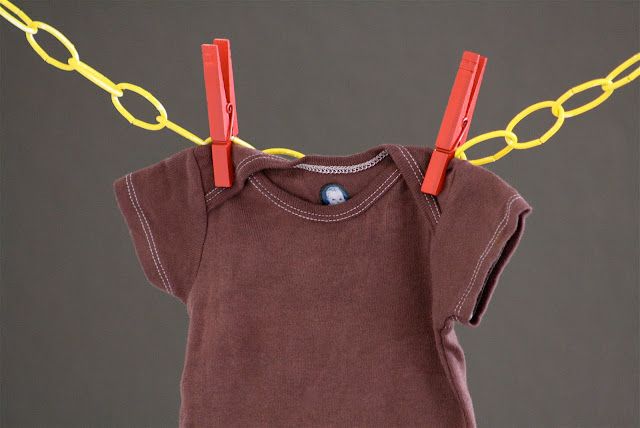
Dyeing Technique
The most common technique for dyeing fabric at home is using a stove and pot to heat the dye bath. This allows you to control the temperature and evenly distribute the dye. Here are the key steps for dyeing with a stovetop:
Fill a large pot with enough water to fully immerse the fabric. Heat the water to just below a simmer, around 180-190°F. Remove from heat and stir in the dye powder or liquid according to package instructions. Mix until fully dissolved. For even dyeing, the temperature should stay in the range of 160-180°F.
Once the dye bath is prepared, submerge your pre-wetted fabric, moving it around to eliminate air pockets. Keep stirring periodically, around every 5 minutes, to maintain even exposure. For large or thick fabrics, you may need tongs to move the material around.
After 30-60 minutes, check for color saturation. Leave in longer if needed for darker or more vibrant shades. Rinse in cool water until dye stops bleeding from the fabric.
Proper heating and agitation while immersed leads to the most uniform dyeing results. With these key steps, you can achieve beautiful custom colored fabrics.
Drying and Curing
After dyeing the fabric, it’s important to properly dry and cure the material to set the dye and prevent fading or bleeding. Here are some tips for drying and curing dyed clothes:
Hanging to dry: Hang or lay the dyed fabric out flat to air dry. Avoid direct sunlight which can fade colors. Let it dry completely before rinsing or washing again. According to Rebecca Desnos, plant-dyed clothing should be left to dry for at least 48 hours before washing to allow the dye to fully cure.
Heat setting: For fabrics like cotton or rayon, heat can help set the dye. After air drying, press the fabric with an iron on the highest heat setting (without steam) or run it through the dryer on the highest heat setting until completely dry. Refer to the care instructions for the fabric before applying heat. According to WikiHow, the heat helps the dye bind to the fibers.
Once the fabric is fully dry, the dye should be cured and properly set. Avoid wearing or washing the clothing until it has been dried and cured.
Achieving an Even Color
Getting a perfectly even dye color across the entire fabric can be challenging. However, there are some tips that can help avoid splotchy results:
Make sure the dye bath is large enough for the fabric to move freely while stirring. If the fabric is bunched up too much, it can lead to uneven absorption of the dye. Use a vat or bucket that allows plenty of room for the item being dyed to circulate (source).
Stir the fabric continuously during the dyeing process. This helps ensure the dye penetrates evenly across all areas of the fabric. Use a long wooden spoon or dowel to stir clothing in a bucket or vat (source).
Check for color consistency at regular intervals. Take the fabric out periodically while dyeing and look for any light or dark patches. Target any uneven areas with more stirring or touch-up dyeing.
Pre-wash the fabric in hot water. This helps remove any residues that could block dye absorption. Perform several hot water rinse cycles before dyeing for best results.
Use salt in the dye bath. Salt helps the dye penetrate the fabric more evenly. Add 1/2 cup of salt per 1 gallon of water.
Avoid overcrowding the dye vessel. Dye items in small batches if needed to allow adequate circulation and absorption.
Maintaining Color Over Time
Keeping your green-dyed clothes vibrant takes some special care. Here are some tips to maintain the color through many washes:
- Wash in cold water and use a gentle cycle to reduce agitation that can cause dye to bleed. According to The Spruce, cold water helps colors last longer.
- Wash dark or bright greens separately from light or pale green clothes. Sorting properly prevents colors from bleeding into each other.
- Use a color Catcher sheet in the wash to absorb any excess dye released.
- Allow clothes to air dry instead of machine drying to prevent heat exposure from fading the vibrant green.
- Consider doing a touch-up dyeing if you notice the color starting to fade. Follow the original dyeing instructions to redye any sections that are losing their intensity.
With proper care when laundering and periodic touch-ups as needed, you can maintain the beautiful green color of your hand-dyed clothes.

